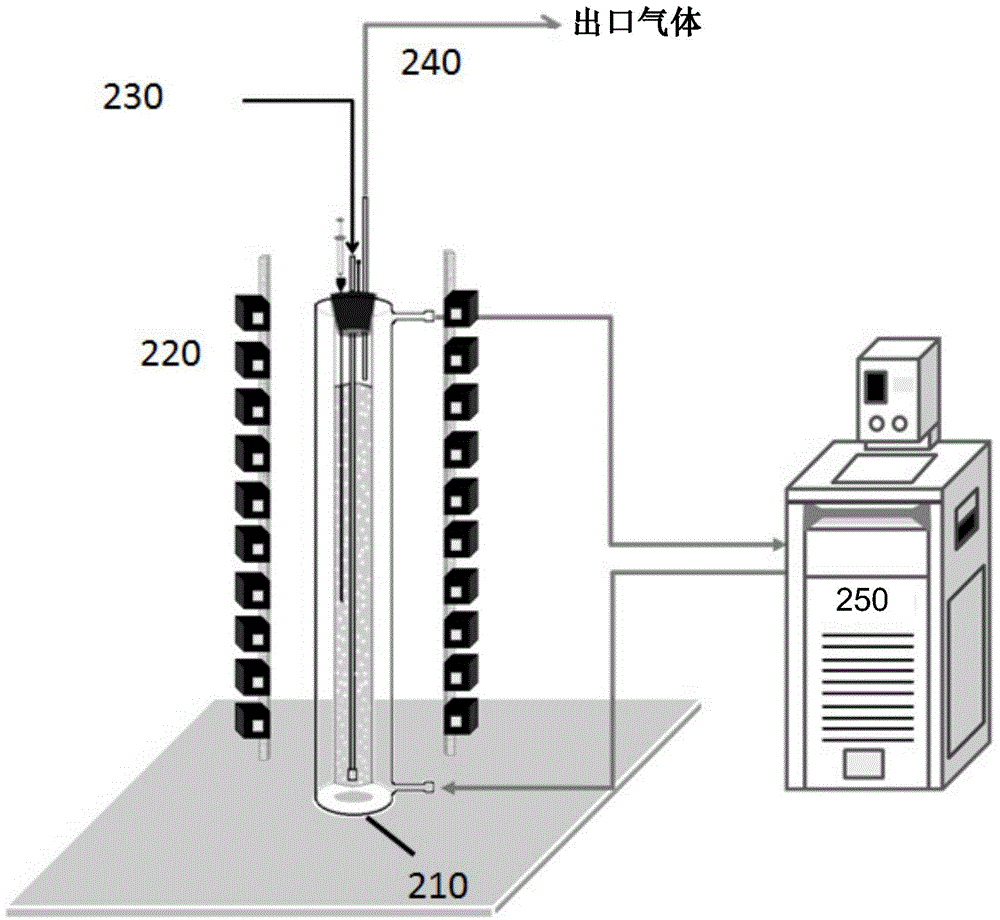Photobioreactor system for air purification
A reactor and air technology, applied in the field of air purification, can solve problems affecting the performance of photobioreactors, and achieve the effect of efficient removal
- Summary
- Abstract
- Description
- Claims
- Application Information
AI Technical Summary
Problems solved by technology
Method used
Image
Examples
example 1
[0063] make use of figure 1 The invention shown to purify CO 2 polluted air. Chlorella sp. was maintained at 1,200,000 microalgal cells / mL substrate in the modified BBM. The temperature of the reactor tank was 25°C. LED mechanism at 200μmol / m 2 the s -1 shine light. CO of inlet gas 2 The concentration was 11.5% and its flow rate was 600 mL / min. After 24 hours, the CO of the outlet gas 2 The concentration was measured to be 3.5%.
example 2
[0065] make use of figure 2 The invention shown to purify CO 2 polluted air. Chlorella species were maintained at 1,200,000 microalgal cells / mL substrate in the modified BBM. The temperature of the reactor tank was 20°C. LED mechanism at 80μmol / m 2 the s -1 shine light. CO of inlet gas 2 The concentration was 500 ppm and its flow rate was 350 mL / min. After 5 days, the CO of the outlet gas 2 The concentration was measured to be 130 ppm.
example 3
[0067] The effects of temperature and light intensity on the growth rate of Chlorella species were studied. The specific growth rate of Chlorella species ( Figure 3A ). It can be seen that up to 450 μmol / m 2 the s -1 The growth of Chlorella species increased with the increase of light intensity. Chlorella species grow above 450 μmol / m 2 the s -1 sudden decrease in light intensity. Then studied at a constant 7.5% v / v carbon dioxide concentration and 105 μmol / m 2 the s -1 Specific growth rate of Chlorella species at different temperatures under light intensity. exist Figure 3B It can be seen that up to a temperature of 35 °C, the growth of Chlorella species is higher at higher temperatures, after which the growth of Chlorella species decreases dramatically at higher temperatures. These results show that optimized microalgae growth for photosynthetic carbon dioxide removal is promoted in the photobioreactor system of the present invention.
PUM
 Login to View More
Login to View More Abstract
Description
Claims
Application Information
 Login to View More
Login to View More - R&D
- Intellectual Property
- Life Sciences
- Materials
- Tech Scout
- Unparalleled Data Quality
- Higher Quality Content
- 60% Fewer Hallucinations
Browse by: Latest US Patents, China's latest patents, Technical Efficacy Thesaurus, Application Domain, Technology Topic, Popular Technical Reports.
© 2025 PatSnap. All rights reserved.Legal|Privacy policy|Modern Slavery Act Transparency Statement|Sitemap|About US| Contact US: help@patsnap.com



